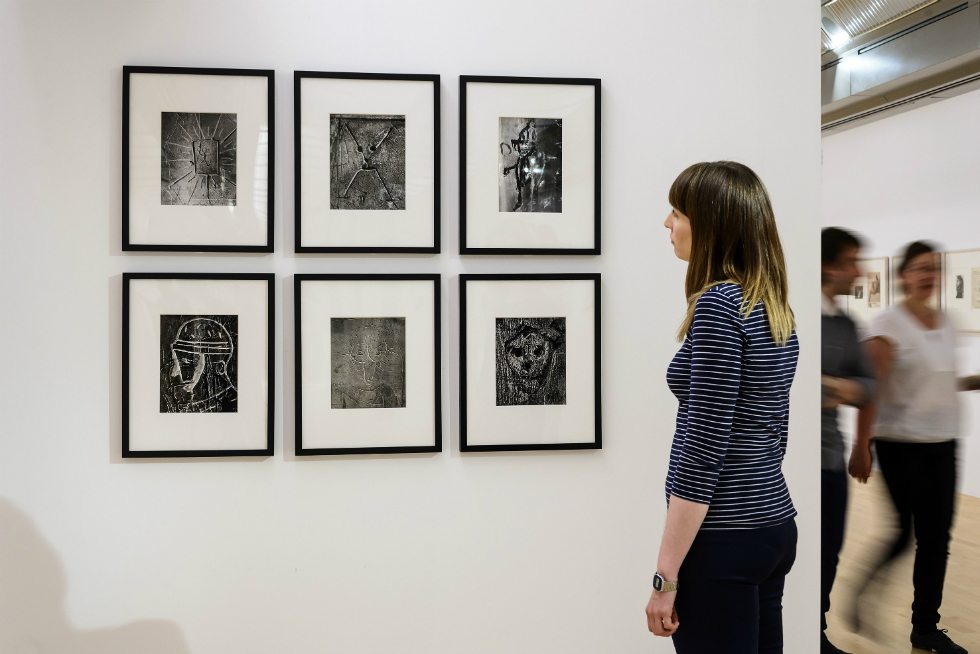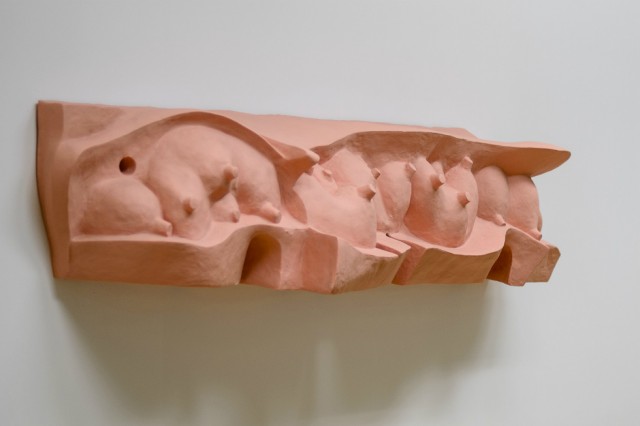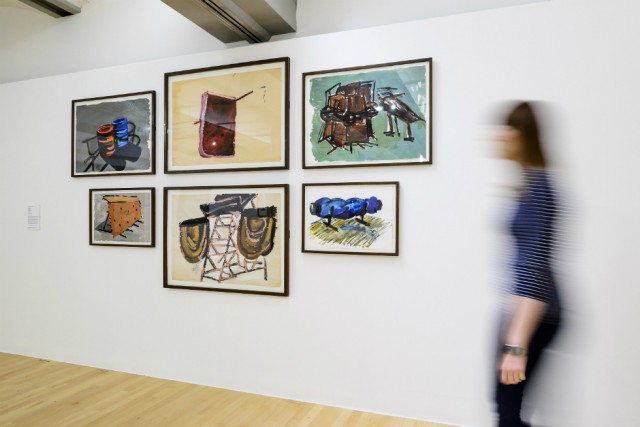Chosen By The Curator: Lauren Barnes’s Favourite Constellations

Bubblegum pink breasts and wonky vitrines: Assistant Curator Lauren Barnes talks us through her favourite works in Tate Liverpool’s brand new (and free) national collection show…
Promising more than 150 iconic artworks from the 20th and 21st century — including pieces by Sir Peter Blake, Louise Bourgeois, Marcel Duchamp, Nam June Paik, Eduardo Paolozzi and Grayson Perry – Tate Liverpool’s brand new iteration of its popular DLA Piper Series: Constellations certainly doesn’t disappoint. Visit the gallery’s second floor now, and you will find Richard Hamilton, Louise Bourgeois, Joseph Beuys and Cindy Sherman acting as four ‘trigger’ artists, or starting points, for the visitor to discuss ideas and movements associated with their work.
All the surrounding artists — a huge variety of practitioners arranged like stars around the constellation’s trigger star — have been carefully chosen by the in-house curators from Tate’s national collection to examine shared affinities or concerns, encouraging us to forge our own links between the works.
Brassaï: Graffiti c. 1950s (Louise Bourgeois Constellation)
“This series of photographs (above) is a recent acquisition to the Tate collection. They are photographs of graffiti that the Hungarian photographer Brassaï observed on the streets of Paris — he was really interested in these overlooked, anonymous traces of people marking their presence in public space, on walls or tree trunks.”

Louise Bourgeois: Mamelles 1991, cast 2001 (Louise Bourgeois Constellation)
“This (above) is the trigger work of the constellation: a huge wall-mounted sculpture in bubblegum pink rubber, in which Louise Bourgeois cast a series of icons of breasts unfolding across a landscape. Despite depicting female body parts, Bourgeois saw the work as a portrait of a man who selfishly ‘consumes’ the female body.”
Phyllida Barlow: Untitled 2003, Untitled 1997, Untitled 2003, Untitled 2004, Untitled 1999, Untitled c. 1997–9 (Louise Bourgeois Constellation)
“Phyllida Barlow (below) is best known for her large scale sculptural commissions that challenge the forms of monumental sculpture — for example, the recent Tate Britain Duveen commission. Earlier in her career she often destroyed her sculptures or recycled them into new works, so her drawings, made in preparation for, during, or after, sculptures, are an incredible archive of her sculptural work. They give an insight into her thinking around the relationships of everyday objects and furniture to the people and spaces around them.”

Rebecca Warren: In the Bois 2005 (Richard Hamilton Constellation)
“For the constellation around Richard Hamilton we were thinking about Hamilton’s ideas around languages and systems, and the way he deliberately brought together a variety of visual languages in single works. Warren’s vitrine work In the Bois eloquently breaks down the language of museum display, with its wonky nails, finger-printed glass and objects that sit precariously on top of, rather than within, the three cases.”
Laura Robertson (Editor) with thanks to Lauren Barnes
See the new DLA Piper Series: Constellations at Tate Liverpool (second floor, ongoing) now — free entry. Open daily 10am-5.50pm





